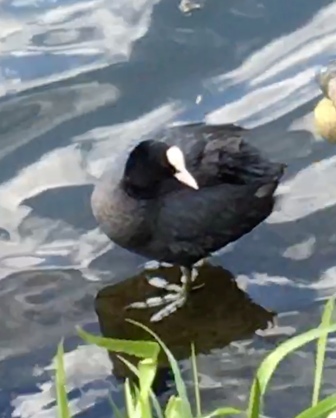We have a wonderful photo to share with you, graciously provided by Janet De Vivo. It is a photo of a coot!
You may recall Jim Butler’s July Feather Fascination article, entitled “Salute a Coot“.
Jim introduced us to the world of the Eurasian Coot, a waterbird which most of us have seen around our waterways, wetlands and ponds.
Eurasian coots belong to the rail and crake bird family, the Rallidae. They are found in Europe, Asia, Africa, New Zealand and here in Australia.
The bird is mainly black in colour, but has a white shield (which gave rise to the expression “bald as a coot“).
In his article Jim also mentions that coots put their feet to good use!
The feet of a coot are not webbed but have “diagnostic flattened lobes” which serve the same purpose as duck webbing. Their legs are quite noticeably positioned a long way back which increases their ability for underwater thrusting.
Jim describes coots as “reluctant fliers” which take off by running across the surface of the water with much ado and splashing.
They attract partners by chasing them around on the water on their feet and flapping their wings, and are also very territorial, using their feet and wings to fight off invaders.
Janet De Vivo’s photo, taken recently in Cardiff, Wales, gives us a lovely view of the somewhat ungainly but very purposeful coot’s feet! Janet kindly agreed to share her photo after reading Jim’s article.

To learn more about the Eurasian coot, head to Jim Butler’s Feather Fascination July 2019.

